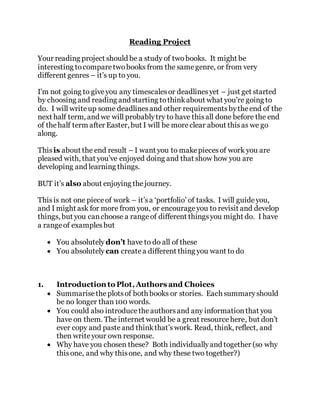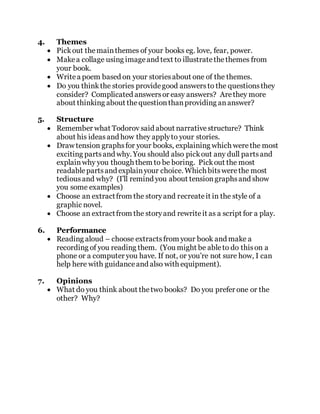The document outlines a reading project assignment where students will analyze and compare two books of their choosing. They can complete a portfolio of tasks analyzing elements like plot, characters, setting, themes, and structure. The teacher provides examples of tasks but emphasizes that students can create their own analyses and pieces of work. The goal is for students to enjoy the process and create work they are proud of that demonstrates their learning and development.


